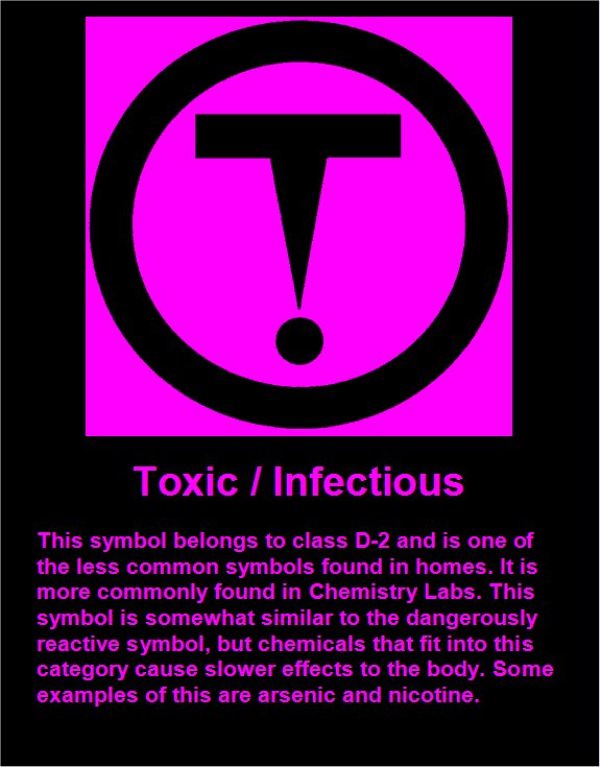
Image Credit: Enokson
If you want your team to be productive, you need to make sure that you have a work environment that will allow them to be successful. Another way of saying the same thing is that you need to make sure that your work environment is not toxic. As managers, this is something that we need to be aware of and manage. We need to understand what can make a work environment toxic and what we can do to prevent it.
Do You Have A Toxic Workplace?
Let’s face it, at some time or another we’ve all worked for at least one bad boss. What were they like? They were lazy. Arrogant. Boorish. They were outstanding examples of the Dunning-Kruger Effect. We all know that they would have failed miserably on Google’s key behaviors of great team manager’s questionnaire. The strange thing is that for some reason, no one in a position to do so did anything about it. So back in the day, we hung in there, and did our best, in spite of our boss. Or did we really?
Hold onto that thought for just a moment. According to a study that analyzed data on approximately 50,000 workers, hiring a superstar worker — defined as a “top 1 percent” employee — will save the average company $5,000. Not bad. Yet avoiding hiring a toxic employee — defined as “a worker that engages in behavior harmful to an organization” — will save the average company $12,500. Even better. Remember that this figure doesn’t even include “savings from sidestepping litigation, regulatory penalties, or decreased productivity as a result of low morale.”
In short, the study showed that it’s better to fire a toxic employee than it is to find and hire a superstar employee. It turns out that the same is true for managers. According to a meta-analysis of 57 different studies, the negative impact created by a bad manager outweighs the positive impact created by a good manager.
How To Fix The Toxic Workplace Problem
What is called “destructive leadership” can significantly decrease many different things including employee job satisfaction. Employee dedication and commitment. Employee well-being. It can also impact employee turnover intention. This could have been yet another factor in the Great Resignation. Oh, and of course overall performance of team members.
What the researchers found was that the highest correlation arises between destructive leadership and attitudes towards the leader. Somewhat surprisingly, the next highest correlation was found between destructive managers and counterproductive work behavior. Or in regular-speak, if my manager sucks I won’t just hate him. I may start acting like him. What is the bottom line? No matter how hard you try, we all know that consistently hiring great managers is impossible. The facts tell us that even if you are super-scrupulous about your hiring process, you’ll still have maybe a 70 percent success rate of a new person really working out — if you’re lucky.
So by all means be thorough, thoughtful, and deliberate when you make hiring decisions. But be even more thorough, thoughtful, and deliberate about dealing with toxic managers. Because that will make a much bigger difference on how your team members feel about coming to work every day, and on how well they do their jobs. This is something you didn’t need a lot of fancy research to tell you.
What All Of This Means For You
As managers, our goal is to find ways to get the most out of our teams. We’ve all taken the training on trying to maximize the productivity of a team. However, there is a fundamental question that we need to answer before trying to implement any of those suggestions. Do we have a toxic work environment? If we do, then nothing that we do is going to work. If we do have a toxic environment, then what is causing it?
We’ve all had bosses that we didn’t think very much of. It turns out that if they didn’t get fired, we probably started to behave just like them. Having good workers is much more valuable than having bad workers. What all of this means is that when managers are called on to make hiring decisions, we need to be very careful because the people that we choose may make our workplaces toxic.
Carefully keeping track of who you have in your workplace is a critical manager skill. We need to understand that if we allow toxic people, including managers, to enter into our workplaces then everyone is going to suffer. This means that we need to put filters into our hiring process to keep toxic people out in the first place.
– Dr. Jim Anderson
Blue Elephant Consulting –
Your Source For Real World IT Management Skills™
Question For You: What should you do if you discover that your company has hired a toxic manager?
P.S.: Free subscriptions to The Accidental IT Leader Newsletter are now available. Learn what you need to know to do the job. Subscribe now: Click Here!
What We’ll Be Talking About Next Time
So I’ve got a quick question for you: are you perfect? No? Well good news – I’m not perfect either. What this means is that both of us will, at times, make mistakes no matter how good our manager skills are. When we do that, others are going to see what we’ve done and they will probably let us know that we’ve screwed up. When this happens, how we react to hearing that we’ve made a mistake is very important. We all have to acknowledge that criticism hurts. It really doesn’t matter if it was warranted or not, from whom it came or how pointed it was delivered, it’s just not fun. As managers, we need to not let it damage our self-love and self-confidence. What we all need are emotionally intelligent of methods for keeping criticism from crushing our confidence.
